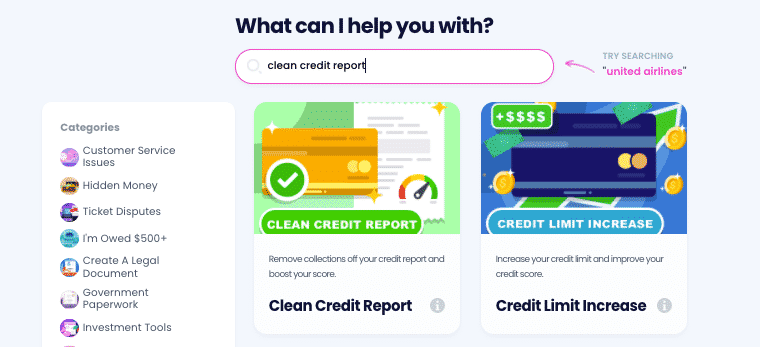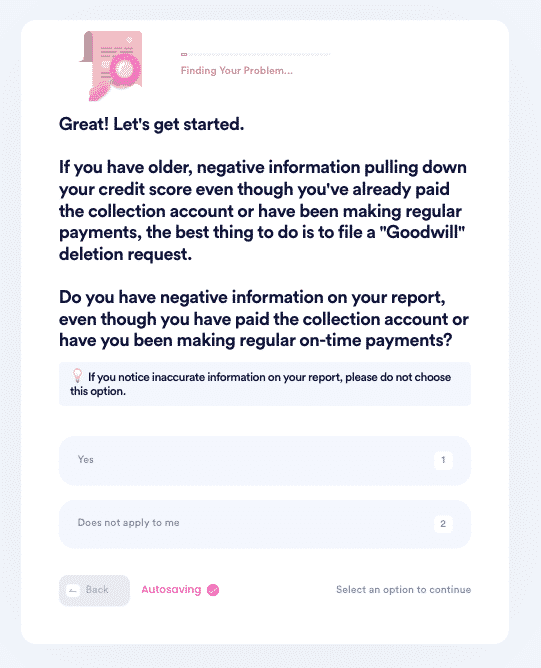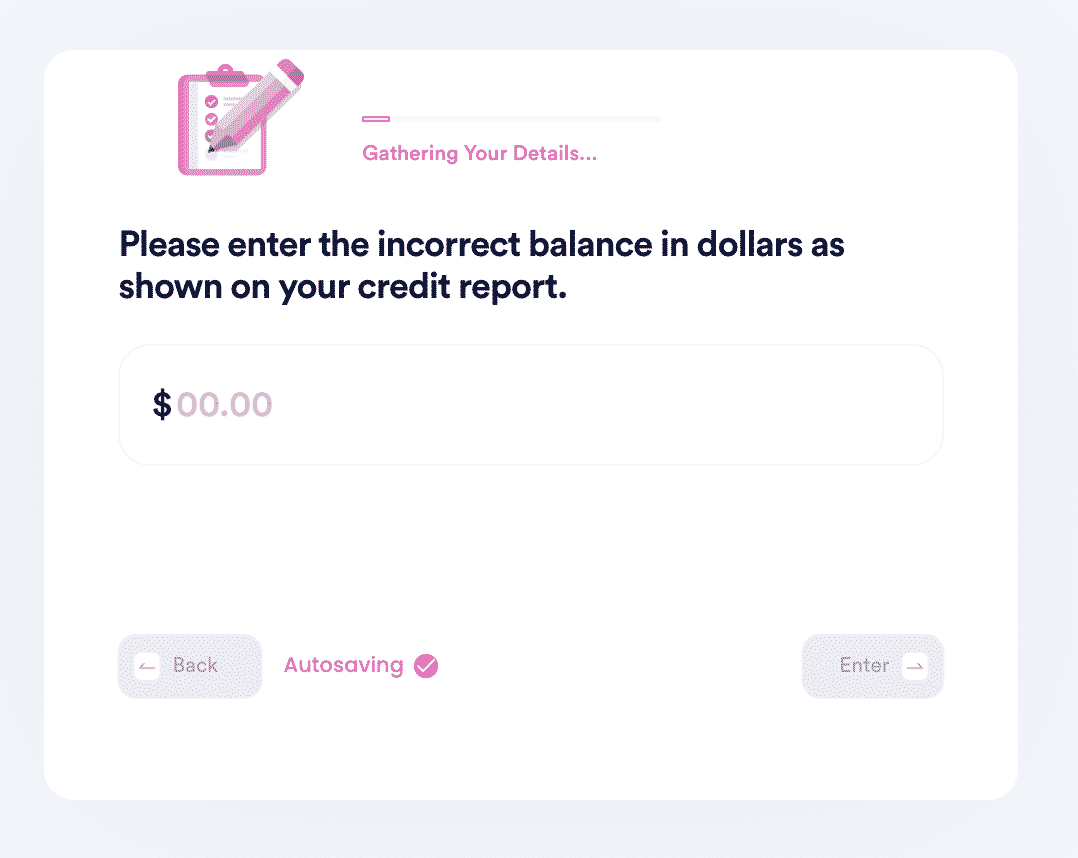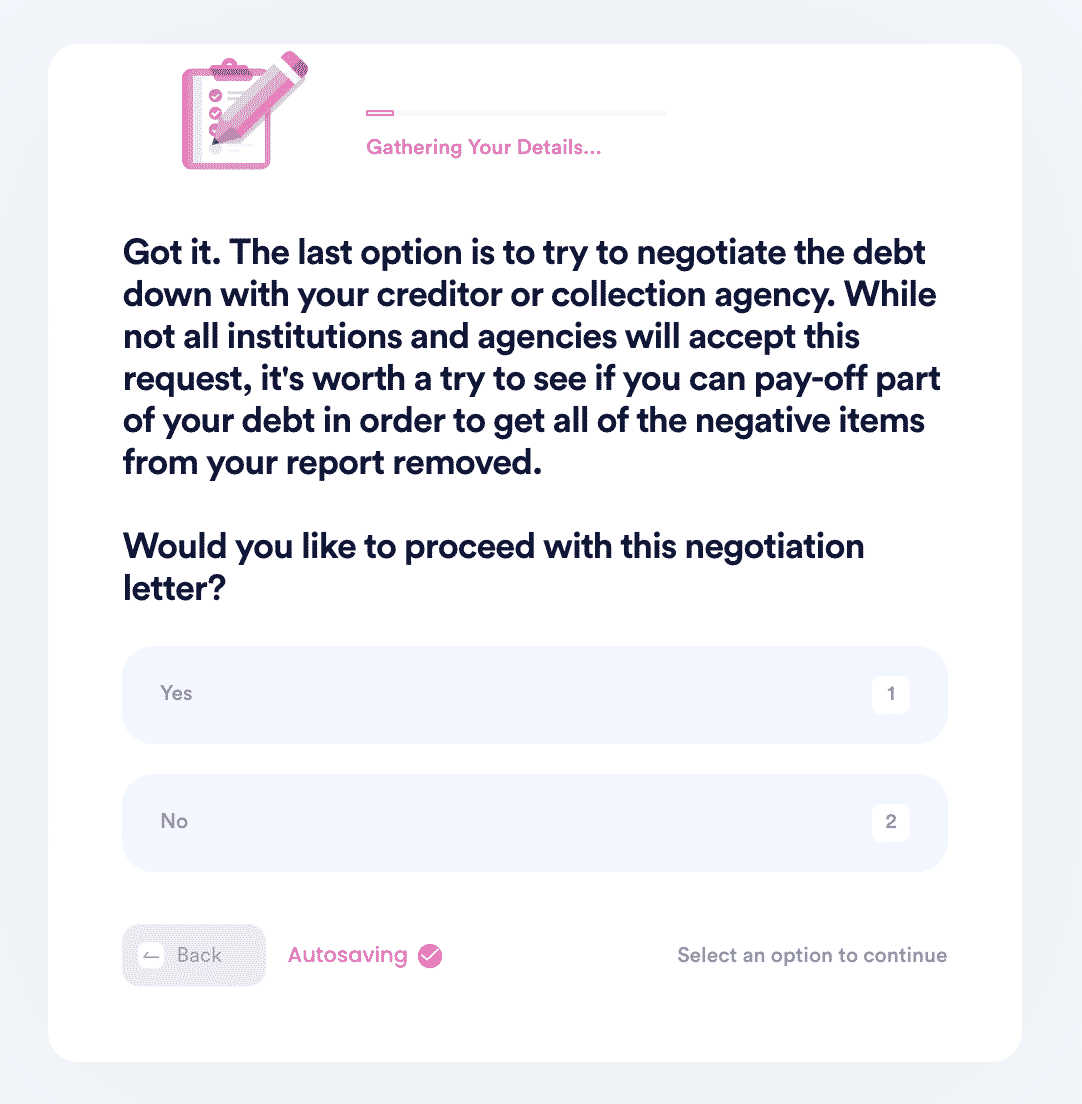How to Submit a Medical Bill Debt Forgiveness Letter
Medical emergencies and serious illnesses are expensive. They can lead to costly procedures like surgery, rehabilitation services, and long-term care. But even with insurance, it can be difficult to meet co-pays and deductibles. The result is a medical debt that is difficult, if not impossible, for many to pay off.
Medical debt can be a serious burden, and it can often be difficult to keep up with the payments. If you find yourself in this situation, you may want to consider applying for to help improve your financial situation. While this may not be an option for everyone, it could be a possible way out of a high medical bill for those who are struggling to keep up with their payments.
In this article, we will discuss what a medical debt forgiveness letter is and how to compose and send one. Once your debt is settled, DoNotPay can assist you with removing this negative report from your credit history with their easy-to-follow, time-saving process. Once removed, your credit score will improve.
What Is a Medical Debt Forgiveness Letter?
A is a serious request for leniency from a creditor. This type of letter is often used as a last resort by people who are struggling to pay back their debts. In the letter, the debtor explains their financial situation and asks the creditor to consider forgiving or reducing the amount owed.
Debtors should only send a medical debt forgiveness letter if they are truly unable to make their payments. Anyone who can make even partial payments should do so instead of requesting forgiveness.
How to Verify the Details of Medical Bills With a Debt Validation Letter
Hospital errors in billing are not uncommon, which means that verifying the details of your debt may help protect you from being overcharged or getting taken advantage of. Before you send a medical debt forgiveness letter, you should request a debt validation letter from the creditor to confirm the balance you are responsible for.
The Fair Debt Collection Practices Act (FDCPA) requires that the medical debt collections agency send you a debt validation letter within five days of your initial contact with them. This letter contains important information about the debt in question and allows you to verify or contest it. The contents are listed below:
- The dollar amount of the debt in question.
- The hospital or other medical practice the debt originated from.
- A statement that you are allowed to dispute the debt amount within 30 days of receipt of the letter. If you do not respond, the debt will be considered valid.
- A statement explaining that if you dispute the debt within 30 days, your debt amount must be verified by mail within another 30 days.
- An explanation of the option of requesting more information about the origin of the debt.
The Federal Trade Commission enforces the FDCPA and may be reached through
| Company | Federal Trade Commission |
| Mailing Address | 600 Pennsylvania Avenue, NW
Washington, DC 20580 |
| Phone Number | (202) 326-2222 |
| Contact Form | ReportFraud.ftc.gov |
How to Write a Medical Debt Forgiveness Letter
When stating your case for debt forgiveness, there are some general guidelines to follow that may help improve your case.
- Keep the letter one to two pages long. Letters that exceed two pages may not be read completely.
- The tone of the letter should be polite since you are seeking help.
- Disclose a few financial details such as your source of income and other monthly debts including your home mortgage, car payment, etc.
- Describe your current hardships that prevent you from paying off medical debt, such as a condition that prevents you from working, causing a drastic reduction in income.
- Suggest a more affordable settlement amount and when it can be paid and the form of payment.
The creditor may choose to respond positively to the letter and agree to work with you to create a more manageable payment plan. In some cases, the creditor may even forgive the debt entirely. However, there is never a guarantee that the creditor will be receptive to the request.
If the creditor approves reducing or eliminating the outstanding medical debt, be sure to get this in writing with the terms of the agreement. This should be on the creditor's letterhead.
How to Manage Medical Debt After Settlement
If, after your forgiveness letter, the creditor has reduced your medical debt, you may still have to come up with ways to pay off the settlement amount that the creditors agreed to. Here are some possible solutions to assist you.
- Obtain assistance from a medical debt counselor and advocate: This professional can assist you with setting up a budget and coming up with a personalized plan to help you meet the outstanding debt.
- Take out a personal loan and consolidate other debt: Look into a low-interest personal loan and consolidate other outstanding high-interest debt with the medical debt into one low-interest payment plan.
- Apply for a hardship plan or financial assistance: Many hospitals have assistance or charitable programs for eligible low-income patients that may help offset the remaining medical debt. There may also be other nonprofit organizations outside the medical community that can help as well.
DoNotPay Can Help Clean Up Your Credit Report
Outstanding medical debt can leave a negative blemish on your credit report. However, DoNotPay can assist you in removing this negative mark and fix your credit score with these simple steps:
- Search Clean Credit Report on DoNotPay.

- Prepare a recent copy of your credit report that you can use as reference.

- Let us guide you through the 4 potential options:
- If you've already paid off your debt, we'll help you file a Goodwill Removal Request to get it removed.

- If you notice any errors in your report (we have a list of common errors you can use!), we'll help you file a credit dispute to the creditor or major credit bureaus.

- If there are no errors, we'll check if you're still eligible to file a debt validation request. If they can't validate your debt, they're required to remove it from your report and they can't collect it!

- Lastly, if none of the above options work, we'll help you file a pay-to-delete negotiation letter. You can customize the amount you are willing to pay in exchange for getting the item removed.

You can also check out our other credit products, including Credit Limit Increase, Get My Credit Report, Keep Unused Cards Active, and more!
DoNotPay Can Help With Other Credit Issues
Not only can DoNotPay assist you with removing your medical debt from your credit history, but they can also help you with the following other credit situations:
- Disputing your credit report
- How to write a credit dispute letter
- How to remove late payments from your credit report
- How to remove inquiries from your credit report
DoNotPay Works Across All Companies, Groups, and Entities
DoNotPay offers an extensive database of solutions that can help you solve many issues, including the following:
- Where to find unclaimed money
- Help with bills
- How to jump the phone queue for any company
- Dealing with parking tickets
- Credit card issues
- How to file warranty claims
- How to appeal banned accounts
- Cancel any service or subscription
- How to write a financial aid appeal letter
When you need help with life's everyday administrative dilemmas, look no further than the experts at DoNotPay. They have all of your solutions and guides available on their website for immediate access. With DoNotPay, there is never a need to waste another second going through red tape or being stuck with an unhelpful company or government agency.
 By
By